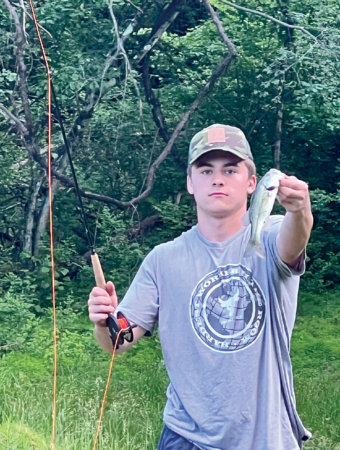Teaching people how to fish may seem like a very simple procedure to some; after all, the only thing you have to do is put a worm on a hook, throw it in the water, and watch for the bobber to go under.
To be honest, that simple maneuver does indeed catch fish, but the truth is there is far more to learn and master to be frequently successful.
Think about it: we have a wide variety of fish species to fish for, and each has its unique behaviors. In addition, these various fish species all inhabit a wide range of different water conditions, from large, deep lakes to tiny woodland streams. If that isn’t enough to complicate things, there is also a variety of tools and techniques for catching fish, and the number of lures and baits available, and the specific ways to fish those lures and baits is mind-blowing.
For those of us who have been fishing for most of our lives, we don’t often give it much thought; we just go do our thing, but when it’s time to teach or show someone else some aspect of fishing, it makes us think about how involved it can be.
Usually, every year or so, someone will ask me to teach them how to fly fish. When that happens, it’s time to think through the process and be able to put it in a simple but clear form, along with actual physical demonstrations of how the process works.
This is especially important when it comes to fly fishing.
I was recently reminded of this when Kaden Rodarmel, a high-school senior at Loyalsock, asked me to show him how to use a flyrod. After going through the usual verbal and actual procedures, Kaden soon found himself laying out a decent fly. We also had access to a pond — a nice plus, and on the third cast, Kaden was into his first fish on a flyrod. Needless to say, I think he’s “hooked”.
I remember my own learning experience when I was in high school, and my art teacher, Sam Richards, offered to take me fly fishing on a small trout stream. I’ll admit that it was very frustrating; I spent most of my time unhooking my fly from trees and brush and not from fish. I finally caught my first and only trout at the end of the day, but I was definitely “hooked.”
It’s not just fly fishing either, since all aspects and techniques offer their own unique characteristics that must be mastered.
I remember teaching my wife, Sheila, how to fish with tiny jigs for crappies and other panfish. We were wading the shoreline of a local lake, and I was taking crappies on a pretty regular basis. On the other hand, Sheila was still trying to learn to cast the lure properly and then maintain a tight line to feel the gentle strike of a willing taker. It took a while, but she soon began to take some crappies-she was “hooked.” Years later now, it’s a rivalry to see who will have the most fish at the end of the day, and rumor has it that I have lost on several occasions.
The point is, that teaching others the different aspects of fishing makes you think more about what you are doing and why.
Not only that, but seeing others become successful at such an enjoyable activity is also a very rewarding experience for the instructor as well as the person learning the technique.
Not only is it a rewarding experience for the teacher, but it’s also an excuse to justify going fishing, and the more you’re on the water, the better.




